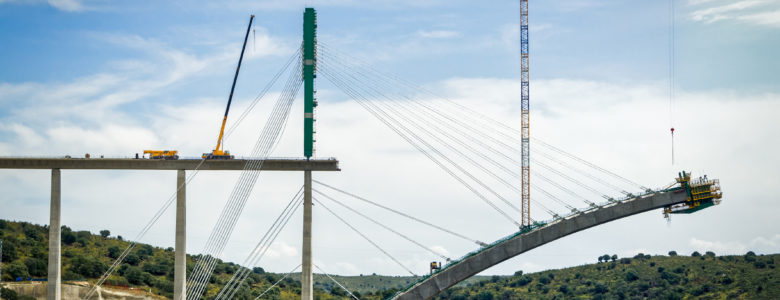We all know how important a good foundation is for a building.
But a properly built foundation might be even more important for a bridge. And with the poor state of our infrastructure these days, there is an urgency to building bridges with strong foundation construction.
While it may seem straightforward at first, building a foundation for a bridge is a complicated process. If a bridge is going over water, there’s a good chance that it will need underwater supports.
In this article, we’ll look at a few methods of foundation construction for bridges.
Deep vs. Shallow Foundation Construction
You don’t need to be an architect to guess the difference between a deep foundation and a shallow one.
But depth isn’t the only difference between the two. Each method transfers the weight of the load to the ground in a different way.
Shallow foundations typically have a wide base, which then transfers the weight of the load onto the topsoil. With a shallow foundation, the soil itself carries the burden.
Deep foundations are usually narrow and penetrate through the topsoil to deeper stronger layers of dirt. Here, most of the support also comes from the friction of dirt pushing against the sides of the foundation.
Piling
The most common way to construct a deep foundation for a bridge is called piling.
Long, narrow posts called piles are hoisted into the air by a crane and driven into the ground by a large hammer called a piledriver (not that piledriver).
After the pile reaches the required depth, it is capped off and tied.
Piles can be made of a number of materials such as steel, concrete, and even wood. However, prefabricated concrete is the most common.
Underwater foundation construction
If you are building a bridge over a river or lake, you will face a number of unique challenges.
Before you do anything, you will need to make sure your piles are protected against corrosion. After all, if your bridge is going to last for decades, its foundation needs to as well.
There are a few ways you may perform foundation construction underwater.
Battered piles
This is the simplest method of underwater piling.
Instead of a single beam, battered piles use several, sort of like a twisted fork. The piles are made according to the depth of the water.
They are then dropped into the water from a barge where they are driven into the soft mud. The “tines” of the battered piles spread the weight in several directions to offer maximum support.
Battered piles are typically used for smaller bridges in shallower water.
Cofferdam
For bridges with larger support towers (think the Brooklyn Bridge), construction is a little more complicated.
Several thin, sheet-like piles are fitted together to make a watertight chamber called a cofferdam. This chamber is then driven into the soil and the water is pumped out.
Once it is free of water, workers construct the towers within the dry cofferdam. The result is a strong foundation that will offer support for decades.
However, cofferdams can be quite dangerous and put workers at risk.
Slurry drilling
Since the soil at the bottom of a body of water is very soft, it is very difficult to drill into it without it caving in.
To do this, a muddy mixture is placed in the location of the desired hole as a placeholder. Once this is in place, the foundations may be driven into place.
Call us today
If you’re building or repairing a bridge and need expert foundation construction for your project, you need to go to someone you can trust.
Foundation Structures has an excellent track record of good work done quickly.
Call us today for a quote.

